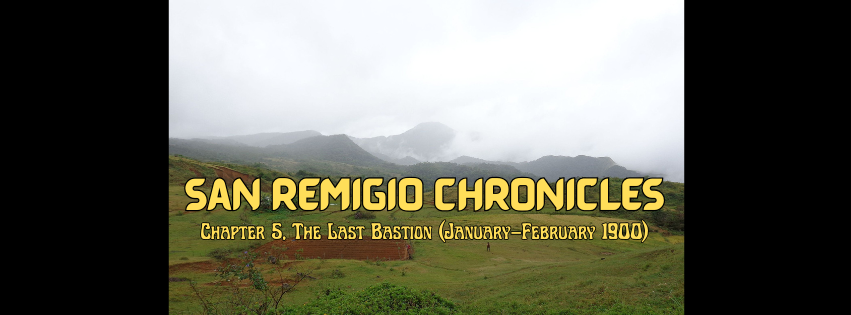San Remigio Chronicles: Chapter 5, The Last Bastion (January–February 1900)
(Rewritten from the account of Deogracias M. Petinglay)
SAN REMIGIO
Rosalinda Velasco Petinglay
11/7/20252 min read


The final act of the Filipino-American War in Antique was set. Having inspected the fortifications at Calala—the trenches, the earthworks, and the cannons facing the sea—Lt. Col. Martin Maza organized his defense. He issued immediate orders to his captains: Demetrio Nava was to assume command of the regular forces and the left wing of the defense, while Captain Simeon Cabrillos commanded the militiamen and the bolo men on the right.
On the evening of February 23, 1900, Maza selected a high ground site for his command post. Just before dawn, he formally delegated command of the troops to Captain Cabrillos, with Lieutenant Pedro Armonio supervising the lines. Cabrillos was then ordered back to the command post, transitioning from field officer to Maza’s aide-de-camp, ready to relay crucial orders.
At the very break of day on February 24, 1900, the American warships appeared on the horizon. The bombardment began instantly.
The massive cannons of the U.S. Navy pounded the Filipino fortifications at Calala, softening the shore defenses to protect the amphibious landing of their troops. Once the American soldiers were ashore, the land battle commenced.
The Filipino forces—regulars, militia, and bolo men—fought with desperation and courage, defending the coast inch by bloody inch. But the fight was brutally unequal. After hours of combat, the defense collapsed under the sheer superiority of American arms and ammunition, especially the devastating firepower continually supplied by the warships.
The Filipino troops were forced to implement their pre-arranged retreat plan. They pulled back rapidly toward San Remegio, arriving there by one o’clock in the afternoon. The town was, for the time being, a haven.
Maza and his officers quickly gathered their remaining forces and positioned cannons to cover the main trenches, which ran for a half-kilometer up to the town’s main entrance. With battle imminent, an urgent order was issued for the inhabitants to evacuate immediately. They were told to leave their homes and seek safety in whatever secure place they could find, so as not to interfere with the final defense.
The exodus was swift and necessary. Even the Provincial Governor and his family arrived in San Remegio that afternoon, only to find the town deserted. They, too, were forced to continue their flight toward the interior locality of Talibong, where they briefly met the families of Lt. Col. Maza, Captain Cabrillos, and Municipal President Luis Occena.
But the commanders could not rest. At one o’clock the next morning, Lt. Col. Maza and Capt. Cabrillos arrived at Talibong, having crossed through the mountains from the battlefield. They were immediately called away to a critical conference in the barrio of Cuyapyao, Patnongon, to plan the next phase of the guerilla war.
Half an hour after the conference began, the families of the government leaders continued their flight to the deeper, safer locality of Bulawan. The defense had failed on the coast, but the war continued in the mountains. A notice arrived from Florentino Marfil, the commander in Igbolo: American troops, crossing the mountains from Iloilo, had arrived in Bagumbayan.
The resistance had been forced from the coast and into the mountains. The struggle for freedom was not over; it had simply moved to the ancestral strongholds of the unvanquished land.
